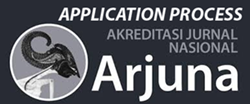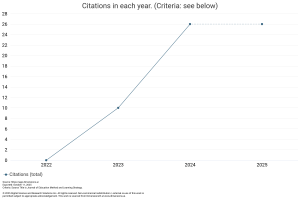Information Literacy: Utilization of Taman Budaya and Museum UPT Towards Motivation for Learning History
DOI:
https://doi.org/10.59653/jemls.v2i02.824Keywords:
Literacy Learning, Cultural Parks, Museum Collections, Digital MediaAbstract
Information literacy learning is very important for teachers and students to improve understanding and skills related to digital media. Learning activities and motivation become triggers for certain behaviors and attitudes and giving a resistance orientation will lead to persistence and not giving up easily getting results. This research introduces museums to students as a learning resource and reference. This type of research is qualitative. The public is invited to participate in interviews and observations, providing information, opinions and perceptions to understand social phenomena from one's point of view. The results show the extent to which management of cultural parks and museums encourages the use of information technology to attract visitors to educational institutions. Providing detailed information about museum collections and exhibits related to historical themes can help curators of cultural parks and museums motivate students to learn more. This is useful for engineering practitioners because it assists the public in exploring museum collections through newspapers, brochures, magazines, websites of cultural parks and museums, as well as online social media.
Downloads
References
Artayasa, I. P., Fitriani, T., Handayani, B. S., & Kusmiyati, K. (2021). Efektivitas Penerapan Model Pembelajaran Think Talk Write (TTW) Secara Online Terhadap Literasi Informasi Siswa SMA. Jurnal Kependidikan: Jurnal Hasil Penelitian Dan Kajian Kepustakaan Di Bidang Pendidikan, Pengajaran Dan Pembelajaran, 7(3), 641.
Cahyani, A., Listiana, I. D., & Larasati, S. P. D. (2020). Motivasi Belajar Siswa SMA pada Pembelajaran Daring di Masa Pandemi Covid-19. IQ (Ilmu Al-Qur’an): Jurnal Pendidikan Islam, 3(01), 123–140.
Era, D. I., & Industri, R. (2018). Mahasiswa Calon Guru Menghadapi Pembelajaran. 214–224.
Evitasari, O., Qodariah, L., Gunawan, R., Ilmu, P., Sosial, P., Uhamka, S. P., Merina, M., Fernandez, D., & Vol, J. A. (2021). Pemanfaatan Fungsi Museum Sebagai Sumber Kemampuan Berpikir Kritis. Jurnal ESTORIA, 1(1), 43–56.
Fatmawati, E. (2020). Kompetensi Literasi Informasi Pustakawan Di Era Infodemik. Nusantara - Journal of Information and Library Studies, 3(2), 172.
Harahap, F., Nurliza, & Nasution, N. E. A. (2020). Jurnal Pelita Pendidikan. Jurnal Pelita Pendidikan, 8(1), 52– 61.
Misnah. 2019, Belajar Melalui Pengalaman Historis (BMPH) Pada Siswa SMP Di Kabupaten Sigi Sulawesi Tengah. Jurnal Pengabdian Kepada Masyarakat 2 Nomor:2:155.
Misnah. (2019). Pengaruh Media Pembelajaran Situs Lumpang Batu dan Motivasi Belajar Siswa Terhadap Hasil Belajar Sejarah Siswa SMA. Jurnal Teknologi Pendidikan (JTP), 21(2), 42–55.
Mulyono, D., & Ansori, A. (2020). Literasi Informasi Dalam Kerangka Pengembangan Pendidikan Masyarakat. Comm-Edu (Community Education Journal), 3(1), 1.
Rahmawati, N. A. (2019). Urgensi Kelas Literasi Informasi Bagi Mahasiswa di Perpustakaan. Jurnal Perpustakaan, 10, 51–56.
Robbins, S. P. (2019). MANAJEMEN SUMBER DAYA MANUSIA Eri Susan 1. Jurnal Manajemen Pendidikan, 9(2), 952–962.
Sasmita, R. S. (2020). Research & Learning in Primary Education Pemanfaatan Internet Sebagai Sumber Belajar. Jurnal Pendidikan Dan Konseling, 1, 1–5.
Setiawan, A. R. (2019). Literasi Saintifik Berdasarkan Kecerdasan Majemuk dan Motivasi Belajar. Media Penelitian Pendidikan : Jurnal Penelitian Dalam Bidang Pendidikan Dan Pengajaran, 13(2), 126.
Sugiyono. 2019. Metode Penelitian Kuantitatif, Kualitatif dan R&D. Bandung: Penerbit Alfabeta. Wardana, & Djamaluddin, A. (2020). Belajar Dan Pembelajaran
Downloads
Published
How to Cite
Issue
Section
License
Copyright (c) 2024 Juraid Abdul Latief, Haliadi, Anna Asriani Muchlis, Nur Afni

This work is licensed under a Creative Commons Attribution-ShareAlike 4.0 International License.
Authors who publish with this journal agree to the following terms:
- Authors retain copyright and grant the journal right of first publication with the work simultaneously licensed under a Creative Commons Attribution-ShareAlike that allows others to share the work with an acknowledgement of the work's authorship and initial publication in this journal.
- Authors are able to enter into separate, additional contractual arrangements for the non-exclusive distribution of the journal's published version of the work (e.g., post it to an institutional repository or publish it in a book), with an acknowledgement of its initial publication in this journal.
- Authors are permitted and encouraged to post their work online (e.g., in institutional repositories or on their website) prior to and during the submission process, as it can lead to productive exchanges, as well as earlier and greater citation of published work (See The Effect of Open Access).
























